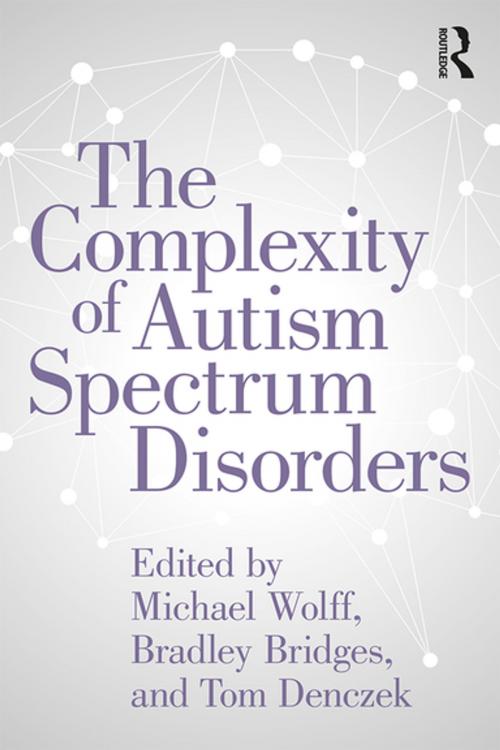The Complexity of Autism Spectrum Disorders
Nonfiction, Health & Well Being, Psychology, Developmental Psychology| Author: | ISBN: | 9780429846328 | |
| Publisher: | Taylor and Francis | Publication: | October 3, 2018 |
| Imprint: | Routledge | Language: | English |
| Author: | |
| ISBN: | 9780429846328 |
| Publisher: | Taylor and Francis |
| Publication: | October 3, 2018 |
| Imprint: | Routledge |
| Language: | English |
Since its first identification, Autism Spectrum Disorder (ASD) has presented myriad challenges of diagnosis and classification. Our understanding has evolved from a cluster of diagnostic categories (Asperger’s, Autism, and Pervasive Development Disorder) to the current continuum of Autism Spectrum Disorder. Meanwhile, we have progressed from debating the validity of the diagnosis, to considering it a modern epidemic. This evolution has drawn attention across a variety of fields, including the neurosciences, education, forensics, and behavioral health. While new research accumulates, there remains a lack of conceptual and practical clarity about what ASD is, how specific diagnoses might be delineated, and what we can do to understand and manage the complexity of individuals on the Spectrum. In understanding ASD, one size does not fit all—families, schools, and clinicians all need a multi-faceted engagement with the specifics they encounter. This text opens a critical dialogue through which students, researchers, and clinicians can challenge their ideas about what it means to work with the unique presentations of individuals on the Spectrum. It provides education, clinical expertise, and personalization to the lives influenced by the ever-changing dynamics of Autism Spectrum Disorder.
Since its first identification, Autism Spectrum Disorder (ASD) has presented myriad challenges of diagnosis and classification. Our understanding has evolved from a cluster of diagnostic categories (Asperger’s, Autism, and Pervasive Development Disorder) to the current continuum of Autism Spectrum Disorder. Meanwhile, we have progressed from debating the validity of the diagnosis, to considering it a modern epidemic. This evolution has drawn attention across a variety of fields, including the neurosciences, education, forensics, and behavioral health. While new research accumulates, there remains a lack of conceptual and practical clarity about what ASD is, how specific diagnoses might be delineated, and what we can do to understand and manage the complexity of individuals on the Spectrum. In understanding ASD, one size does not fit all—families, schools, and clinicians all need a multi-faceted engagement with the specifics they encounter. This text opens a critical dialogue through which students, researchers, and clinicians can challenge their ideas about what it means to work with the unique presentations of individuals on the Spectrum. It provides education, clinical expertise, and personalization to the lives influenced by the ever-changing dynamics of Autism Spectrum Disorder.















